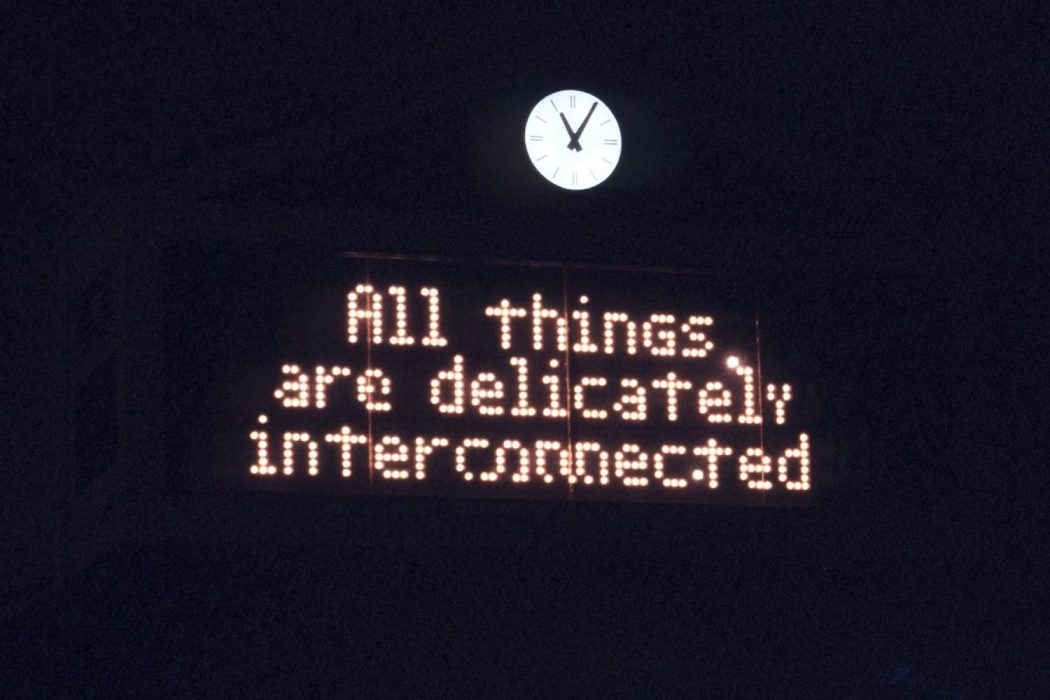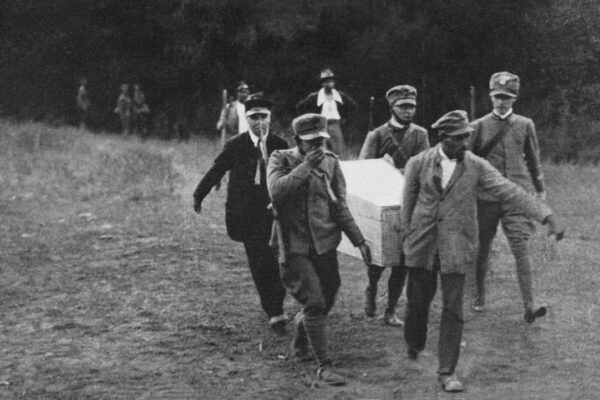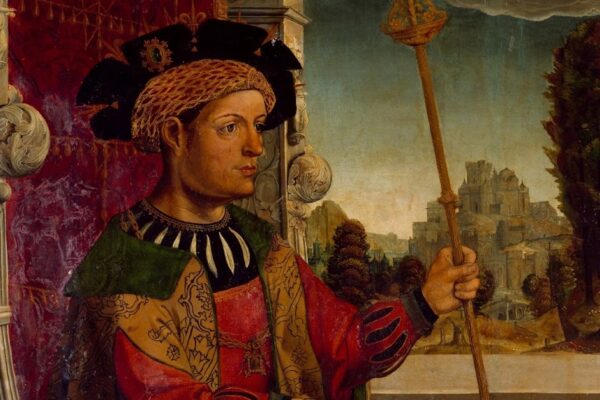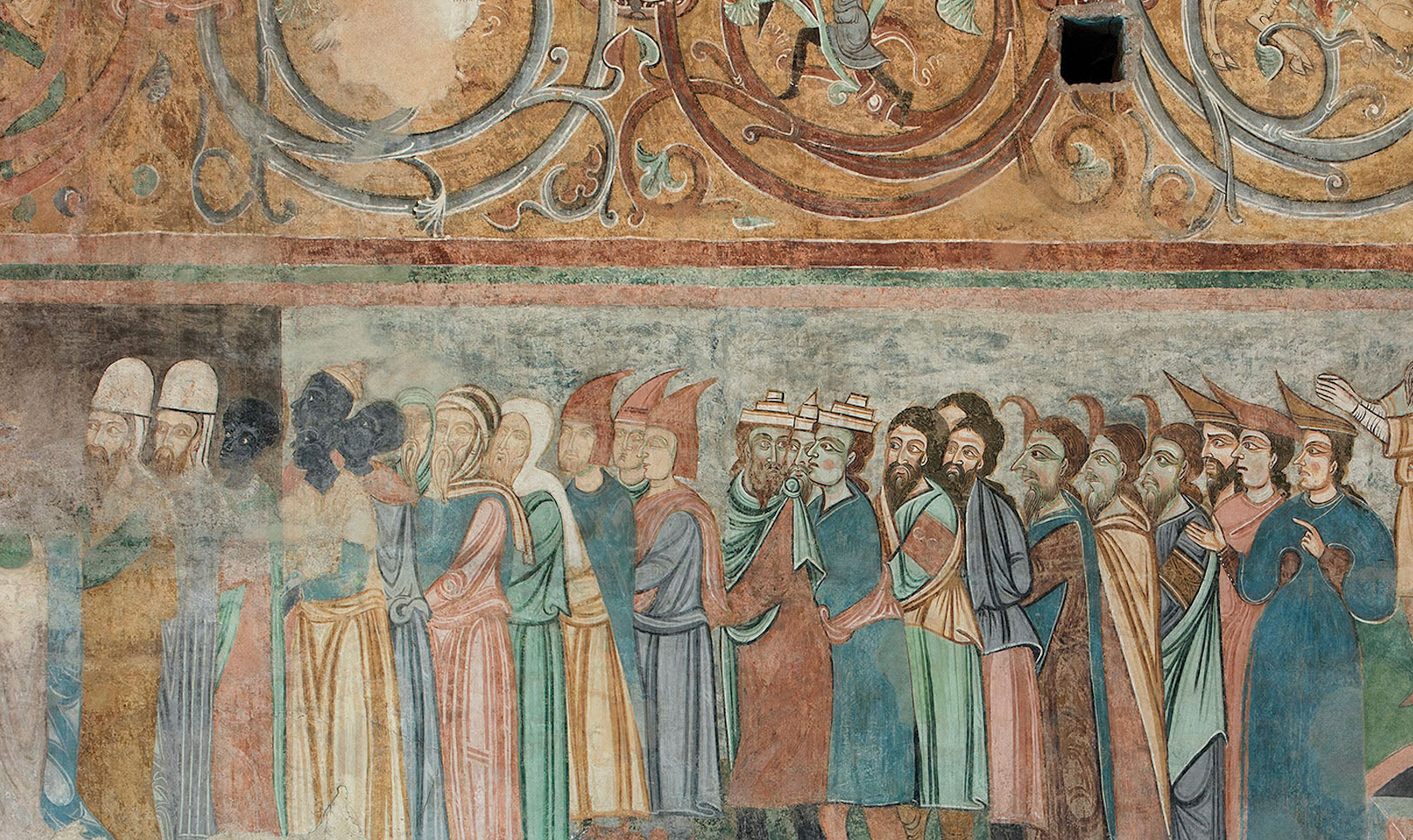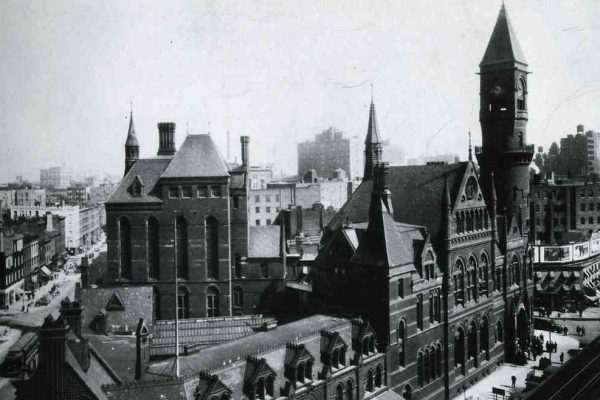Chair in Holocaust Studies and Professor of English and Comparative Literature at the University of California, Los Angeles. His latest book is The Implicated Subject: Beyond Victims and Perpetrators (2019). Previous books includeMultidirectional Memory: Remembering the Holocaust in the Age of Decolonization (2009), and Traumatic Realism: The Demands of Holocaust Representation (2000). With Yasemin Yildiz, he is currently completing Inheritance Trouble: Migrant Archives of Holocaust Remembrance for Fordham University Press.
This essay appears an preface to the English edition of Valentina Pisanty’s book The Guardians of Memory (CPL Editions, 2021).
Valentina Pisanty’s The Guardians of Memory opens with a paradox and a question. The paradox derives from an empirical observation: that the very post-Cold War era that has constructed a widespread commemorative culture dedicated to the Holocaust has also been a period in which politics has experienced a rightward turn characterized by ever more virulent racism and racist violence. The question Pisanty poses involves interpreting this paradox: is this conjunction of a memory culture that understands itself as dedicated to tolerance and antiracism and a political culture that is trending racist merely a coincidence or is there a deeper causal connection to be found? Has a much-vaunted cosmopolitan Holocaust memory — with its linked slogans of “Never forget!” and “Never again!” — simply failed to prevent the rise of the right or, more darkly, might it even be implicated in that political turn?
Faced with a perilous global situation, this question should haunt us all. In addressing it, Pisanty employs her considerable analytic talents and a wide-ranging knowledge of postwar European and North American culture. Readers will find here a provocative, even polemical, perspective on some of the some of the taken for granted truisms of recent years. Indeed, her book is explicitly written to challenge consensus. If we want to understand the rise of the right, she argues, we who consider ourselves part of a liberal-left democratic culture need to start by practicing “ruthless self-criticism.” As she puts it powerfully: “before lancing the boil of xenophobic nationalism, it is necessary to understand the setting it has taken root and flourished in.” That setting is — in part — a liberal and cosmopolitan memory culture that has sought to promote an agenda of human rights and tolerance though a selective appropriation and commemoration of the Nazi genocide. This memory culture, which Pisanty indeed sees as bearing considerable responsibility for the political dangers of the present, is in the hands of those she calls “the Guardians of Memory.” The Guardians of Memory include those “people, associations or institutions… appointed to conduct appropriate commemorative practices” and, in the case of disputes, to adjudicate who “has more right to express their claims in the vocabulary of the Holocaust.” She has in mind prominent public spokespersons, museum and commemorative site professionals, and — I would assume — scholars like herself and like me. Pisanty’s book is a challenge for all of us who have dedicated ourselves, in our different ways, to preserving the past and remembering for the future.
In the concise chapters of this extended essay, Pisanty tracks the weaknesses of the dominant memory culture across a series of domains of public culture. She takes aim at the sacralization and fetishization of witness testimony, the rigid structures of collective memory, the banality of “Holocaust tourism,” the stereotypical formats of popular film, and the punitive legal culture of memory laws. One of the most salient features of that paradigm — and one to which I will return — is its structuring opposition between victims and perpetrators, which Pisanty calls the “familiar schema persecuted vs. persecutor.” While the Guardians of Memory see these various components of this memory culture as bulwarks against hatred and intolerance, Pisanty wonders if the Guardians are not simply seeking to preserve memory for its own sake. Worse yet, she believes that the languages and practices of the Guardians have too easily lent themselves to appropriation by the very forces they claim to oppose: “the new racists have learned to encapsulate the responses of the Guardians within the rhetorical strategies they employ to drum up consensus.” It is all too easy, she argues, to appropriate the privileged position of victim that buttresses so much commemoration and to turn the pieties of liberal memory culture against liberal values.
Pisanty understands our moment as one of transition in which the Shoah-centered paradigm, which earlier triumphed over a revolutionary narrative of liberation, has now exhausted itself. What comes next remains unclear, but Pisanty believes she has identified some of the reasons for the decline of the Holocaust narrative and, especially, the decline in its ability to fulfill its ethical mission of preventing fascism and racist violence: “the commercialization of trauma, an excess of spurious appropriation, competition among victims, memory saturation, and general loss of interest in the subject.” In particular, the dominant, victim-centered narrative frame of Holocaust memory culture has proven itself inadequate in the face of “morally ambiguous and politically complex situations … where evil is seldom concentrated in a single individual with the same incontrovertible obviousness as it was concentrated in the actions of the Nazis with regard to persecuted minorities.” The point is not — I believe — that the Holocaust itself presents such a simplistic paradigm. Although there are more than enough innocent victims to go around, we know from political philosophers like Hannah Arendt and historians like Christopher Browning that the majority of the perpetrators do not fit our models of extreme evil; and we know from scholars of the occupied lands the Nazis conquered how many morally ambiguous stories of complicity, collaboration, and resistance unfolded during the war. Much of this complexity tends to fall out, however, in the standardized narratives of good and evil produced by the culture industries and internalized by many who pass through various forms of Holocaust commemoration and through Holocaust education in schools and museums.
Pisanty notes the popularity of a new narrative genre in recent years that she sees as beginning to displace the familiar Holocaust paradigm of innocence and evil. In popular television series such as Game of Thrones, she finds a kind of Social Darwinist struggle of all against all in which morality is blurred and all characters are ethically ambiguous at best. I enjoy such series as much as the next person and I can understand Pisanty’s point that they signal a shift in cultural sensibilities — perhaps even a fatigue with the moralistic aesthetics that characterize much popular Holocaust film. They may even offer a more “realistic” map of the power struggles of our time. Yet, however symptomatic the rise of such a genre might be, it hardly provides a viable alternative for contesting the rise of the racist right.
If the familiar genres are inadequate, founding a new narrative will require, among other things, a revised cast of characters that exceeds — or, better, complicates — the distribution of roles Pisanty identifies in the familiar Holocaust frame: “Victims, Perpetrators, Bystanders, and the Just.” Told as a morality tale, the Holocaust narrative has presented itself — in contrast to the revolutionary liberation narrative — as “post-ideological.” Such a post- ideological stance aligned well with the vision of liberal human rights that seemed to triumph with the fall of the Berlin Wall, but it seems hopelessly inadequate in the face of the challenges that occupy the forefront of our consciousness three decades later. These are not new problems, but their new visibility — their unavoidability — calls on us to think creatively and radically about potential solutions. To take just two of the most obvious examples: the Holocaust frame seems inadequate to the systemic nature of structural racism and to the global scale and deep temporality of the Anthropocene with all that it implies about the habitability of the earth. Both structural racism and climate crisis produce plenty of victims and will no doubt continue to do so, but who are the perpetrators and who counts as a mere bystander? What will it mean to join the ranks of the just in attempting to change the dangerous course of contemporary history?
These are questions that have preoccupied me, as they clearly have Pisanty as well. Among the resources I have found valuable in addressing such questions are Primo Levi’s famous essay on the “gray zone,” the writings of Hannah Arendt and Karl Jaspers on collective responsibility, and the theory of intersectional Black feminism. Inspired by those sources, I have proposed the category of the “implicated subject” as a way of moving the discussion beyond the polarized victim/perpetrator binary and away from the fantasy of the uninvolved bystander. Implicated subjects are those who enable, benefit from, and perpetuate injustice and inequality without being direct perpetrators and without controlling the regimes that produce injustice. The category of the implicated subject is essential to understanding such phenomena as structural racism and climate crisis in which deadly damage ensues even without obvious perpetrators such as murderous police or criminally negligent corporations. Implicated subjects are also central to the perpetration of genocides, including the Holocaust, which would not be possible without the cooperation and consent of thousands, even tens of thousands, of people who have participated indirectly — or failed to intervene — in mass murder, but who could never be tried in a court of law. The notion of implication—indirect entanglement in injustice — also has significance for rethinking memory cultures beyond the kinds of simplistic schemas of good and evil to which Pisanty draws our attention. Implicated subjects include those who inherit histories of violence and inequality, such as young Germans who grew up long after the Holocaust or White Americans faced with our country’s own history of genocide and slavery. Such “diachronically” implicated subjects are certainly not guilty of the crimes of those who came before them, but by virtue of their membership and participation in national collectives they bear historical and political responsibility for those wrongs — and for the legacies they leave behind. One of the shortcomings of the familiar Holocaust memory culture, we might say, is its inability to activate recognition of our ethical and political implication in injustices — not just those that are past, like the Nazi genocide, but those in which we continue to live.
Narrative genres that foreground implication and complicity provide an alternative to moralistic tales of pure victims and evil perpetrators without succumbing to a Social Darwinist cynicism. Ultimately, however, the solution to our troubled political climate will not be found in cultural production alone. The cognitive shift necessary to tackling the “morally ambiguous and politically complex situations” in which we find ourselves will require, I would suggest, an insurgent, grassroots work of memory and activism across numerous social domains. The situation we face is dire — and not just because of the rise of the right — and it is not easy to maintain hope in the face of the floods, fires, vicious inequalities, and pandemics of our times. In search of alternate models, I suggest we look both to the activism of the present and to the activism of the past — including the memory activism that catalyzed remembrance of the Holocaust before the “Americanization” and “globalization” that took place in the 1990s. Before memory of the Holocaust became an integral part of the consensus, liberal narrative that Pisanty anatomizes in this book, it played a role in progressive struggles for decolonization in the 1950s and 1960s.
Such “multidirectional memory,” as I have called it, both catalyzed struggles against colonialism and served to inspire greater attention to the specificity of the Holocaust itself. For instance, in France during the Algerian War of Independence, testimony played a role unlike either the sacralized form of witness Pisanty criticizes or the historically verifiable form she values; instead it was a way of making public truths about state violence that were actively repressed through censorship and other forms of intimidation. In that context, some testimonies about Nazi camps and torture emerged in proximity to clandestine attempts to bear witness to French camps and French torture. In the “land of the perpetrators,” meanwhile, early engagement with the perpetration of the Nazi genocide surfaced during the student rebellion of 1968 and then took shape in the 1980s within grassroots projects dedicated to unearthing local memories of National Socialism, as Jenny Wüstenberg has shown in her book Civil Society and Memory in Postwar Germany.
Such models from the past come with their own limits, of course, and cannot simply be adopted wholesale in the present. What I find valuable in them, however — and what distinguishes them from the memory culture that Pisanty analyzes so powerfully here — is their emergence from below, their insurgent quality, and their explicitly political or civic nature. Those qualities can be found today not so much in mainstream practices of Holocaust memory as in the various activist movements rising up against anti-Black racism and the perpetuation of the legacies of slavery and colonialism. Neither the movements nor the problems those movements address are new, but a conjunction of crises — including police violence, the coronavirus pandemic, and climate catastrophe — have made 2020 a transformational year in the politics of race and memory, even if the concrete results remain unclear. Generally speaking, antiracist activism does not seek primarily to change memory culture, but rather to transform in a radical fashion the structural conditions that produce unequal life chances. Yet, memory work has played a prominent role in the wide-scale demonstrations of 2020 — from the memorialization of victims of police and vigilante violence to the toppling of statues that has taken place across the world. These demonstrations — as well as a project such as the Equal Justice Initiative- sponsored National Memorial for Peace and Justice, which commemorates victims of lynching — reveal how cultural memory can help consolidate racial injustice, but also rise up against it. And indeed, remembrance of the Holocaust is not wholly absent from such insurgent memory. I think of the various Jewish-identified groups such as Never Again Action and Jews Against ICE that have mobilized the very rhetoric of “never again” — about which Pisanty is legitimately skeptical — to challenge racist, anti-immigrant governmental policies. In such activism by young Jews, we often also find the slogan “not in my name,” a sign of what I would call memory activism by implicated subjects.
There are necessary differences between the memory produced in activist circles and that which becomes part of educational curricula and institutionalized remembrance. But my response to the paradox Pisanty identifies — the simultaneous growth of antiracist memory and racist politics — is not to give up the effort of commemorating racist pasts, but to link that memory with the injustices of the present. Only by instilling into our commemorative projects a grassroots dynamism, an awareness of the political stakes of memory, and a forthrightness about our own implication and complicity in structural injustices can we hope to renew the culture of Holocaust memory for the twenty-first century.


